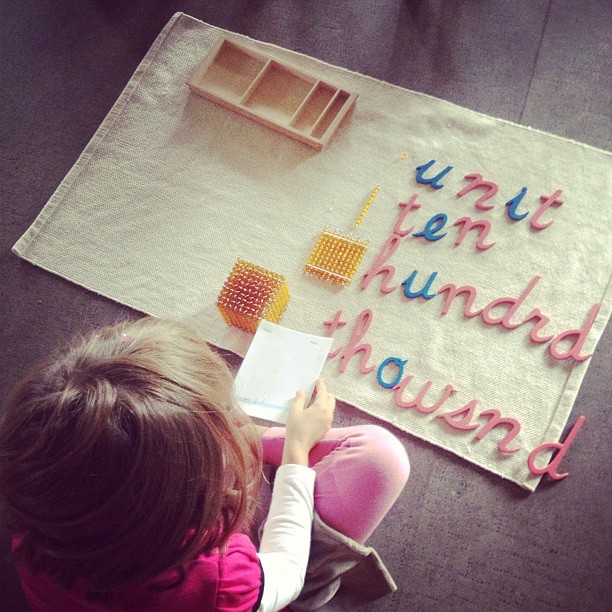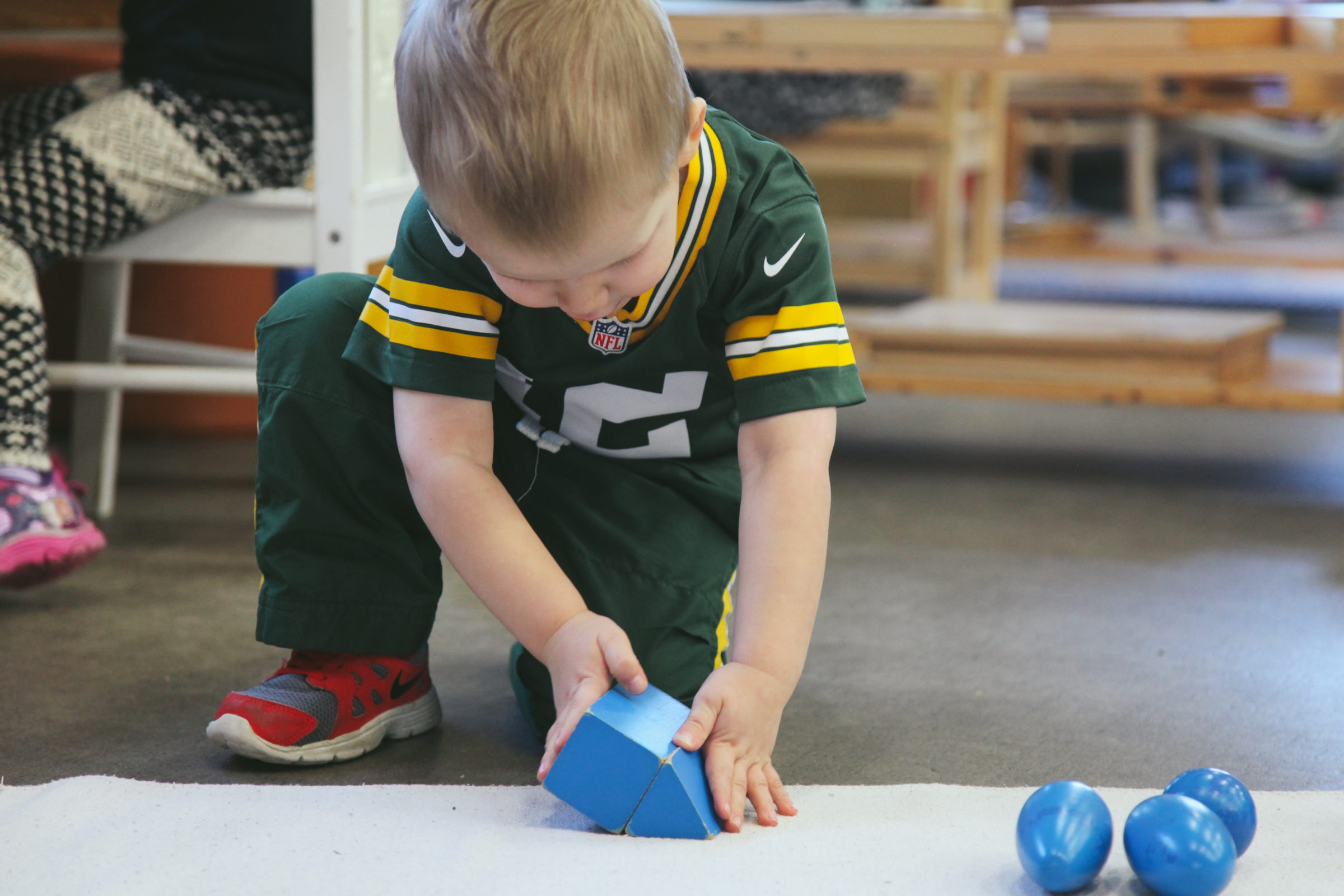1 Unit, 1 Ten, 1 Hundred, 1 Thousand
Thoughts & Reflections

You’ve probably heard us say this before, but if there’s one way to describe Montessori, it is that the only way to achieve the abstract, is through the concrete. Now, there’s a lot at work in this photo, which we thought we would take the opportunity to elucidate in greater detail.
First, you’ll notice the golden beads positioned on the left of the floormat. 1, 10, 100, and 1000. Of course, at this stage, we don’t actually represent them with those numerical determinations. We call them, one unit, one ten, one hundred, and one thousand. As soon as the child understands what the concept of one unit is, what it actually, concretely represents, then we introduce them to the abstract representation of that unit, which is the numeral, “1”.
Second, you’ll also note that this student decided to spell out the golden beads: unit, ten, hundred, thousand. In our estimations, this is a perfect example of how Montessori students come to appreciate math: not that they apply language to mathematics, but they understand that units aren’t just represented with numerals.
The famous philosopher Alfred North Whitehead made this exact same point. A different appreciation of math is afforded when you first think about it in terms of the concrete. It’s easier to understand how many bricks are in a house when you understand, individually, what those bricks represent.
Written by:
Baan Dek



